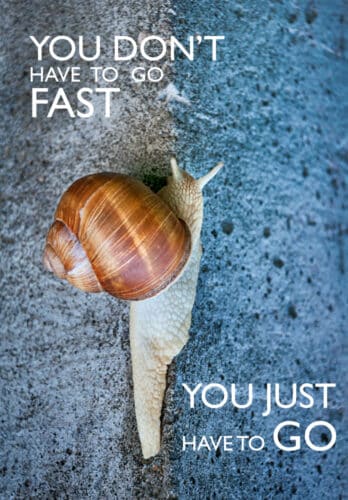 Grit can be defined as the resolve to keep going when things get difficult.
Grit can be defined as the resolve to keep going when things get difficult.
The concept of grit was developed by Dr. Angela Duckworth, a psychologist, and MacArthur Genius who developed her career studying what makes people succeed. She published her studies in “Grit: The Power of Passion and Perseverance.” People with grit achieve their long-term goals by pushing through their challenges. Duckworth interviewed leaders in business, art, athletes, medicine, and academia to understand the relationships between success, talent, and intelligence.
Through her research, Duckworth found that the commonality amongst highly successful people was their passion and perseverance in pursuit of long-term goals. It is important to note that how gritty a person is one day does not determine how gritty they are the next. Grittiness is something you can identify, develop, and practice consistently. Understanding grit is beneficial when looking into how to accomplish your personal and professional goals despite being met with setbacks and challenges.
THE GRIT SCALE
The following measurement is the grit scale measure on a scale from 1-10 (max is 10—extremely gritty) (lowest is 1—not at all gritty):
- New ideas and projects sometimes distract me from previous ones.
- Setbacks don’t discourage me. I don’t give up easily.
- I often set a goal but later choose to pursue a different one.
- I am a hard worker.
- I have difficulty maintaining my focus on projects that take more than a few months to complete.
- I finish whatever I begin.
- My interests change from year to year.
- I am diligent. I never give up.
- I have been obsessed with a certain idea or project for a short time but later lost interest.
- I have overcome setbacks to conquer an important challenge.
GRIT AND EFFORT
A person does not necessarily have to be talented or lucky to succeed. There is a bias that talented people are automatically more successful at their chosen craft and if you are not naturally talented, success can feel unachievable. Just because a person is talented, it does not guarantee success because effort matters more than anything else. Without effort, talent can only get a person so far. For example, if a person is a talented tennis player, they cannot excel at the sport unless they practice consistently. The effort is required to veep skills and then use those chills to achieve something. The willingness to put in the effort at something comes from motivation and to be motivated, a person needs to find something that interests them.
PRACTICE, PRACTICE, PRACTICE
Have you noticed that sometimes you can practice something over and over but still not see improvements? In the context of work, have you worked hard at your job but need to seem to advance? Angela Duckworth described this as when “some people get twenty years of experience, while others get one year of experience…twenty times in a row.” Just because something is done diligently, it does not mean that you will get the best results. Cognitive psychologist Anders Ericsson researched how experts acquired their skills and mastered their crafts. Ericsson learned that practice can help a person improve their skills but to truly excel in a field, they need to put in the time and effort. Professionals have put in a consistent effort at something over many years. For example, a professional violinist has put about 10,000 hours of practice into improving the skill. Experts practice for long hours deliberately. Further, improvement is achieved by deliberate practice and consistency.
- Choose a specific goal for improvement rather than having a general goal to get better at what they do
- Give that goal their undivided attention
- Ask for feedback about what they did wrong
 GROWING GRIT AND ACHIEVING YOUR GOALS
GROWING GRIT AND ACHIEVING YOUR GOALS
Following your interests can be difficult and it can often seem like your goals are impossible to work towards. It can be easier to accomplish your goals by envisioning them on a hierarchy. In this hierarchy, your top goal is what you most want to achieve and your low level is the immediate step that will help you achieve this goal. To accomplish your top goal, it is helpful to first focus on immediate projects. The high-level goal never changes but you can modify the low-level ones as time goes on. This visual hierarchy helps us envision that our rejections, setbacks, and roadblocks are just a means to an end but not the end. In other words, When we fail, we can reorient ourselves by picking new low-level goals while still maintaining our high-level goals.
Source: Grit: The Power of Passion and Perseverance by Angela Duckworth

